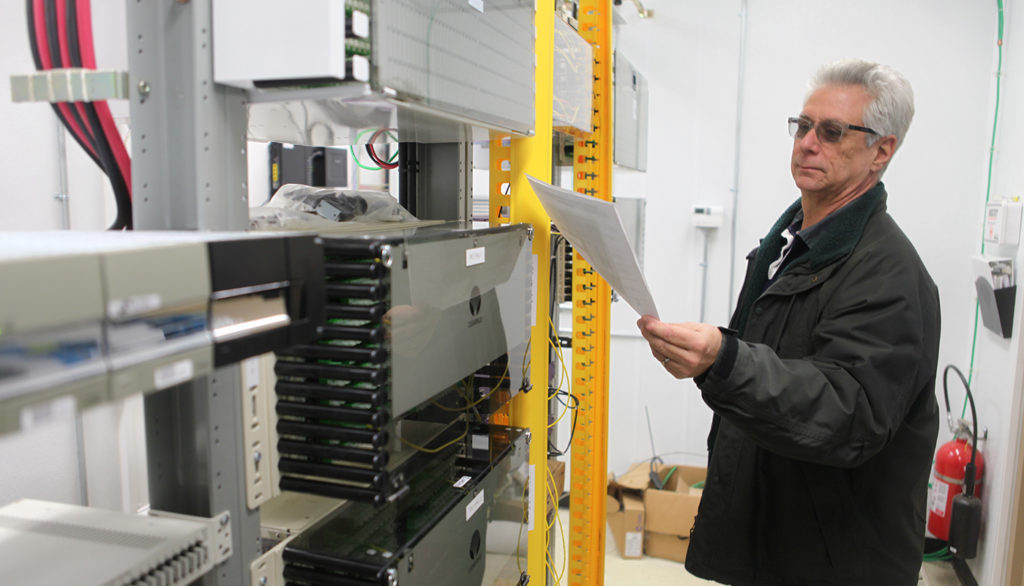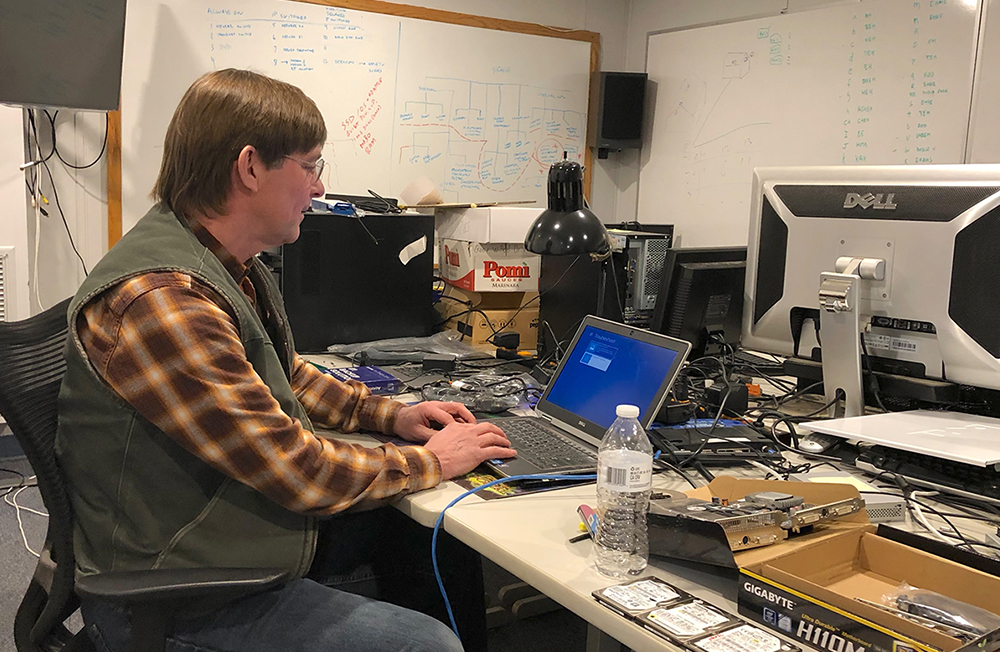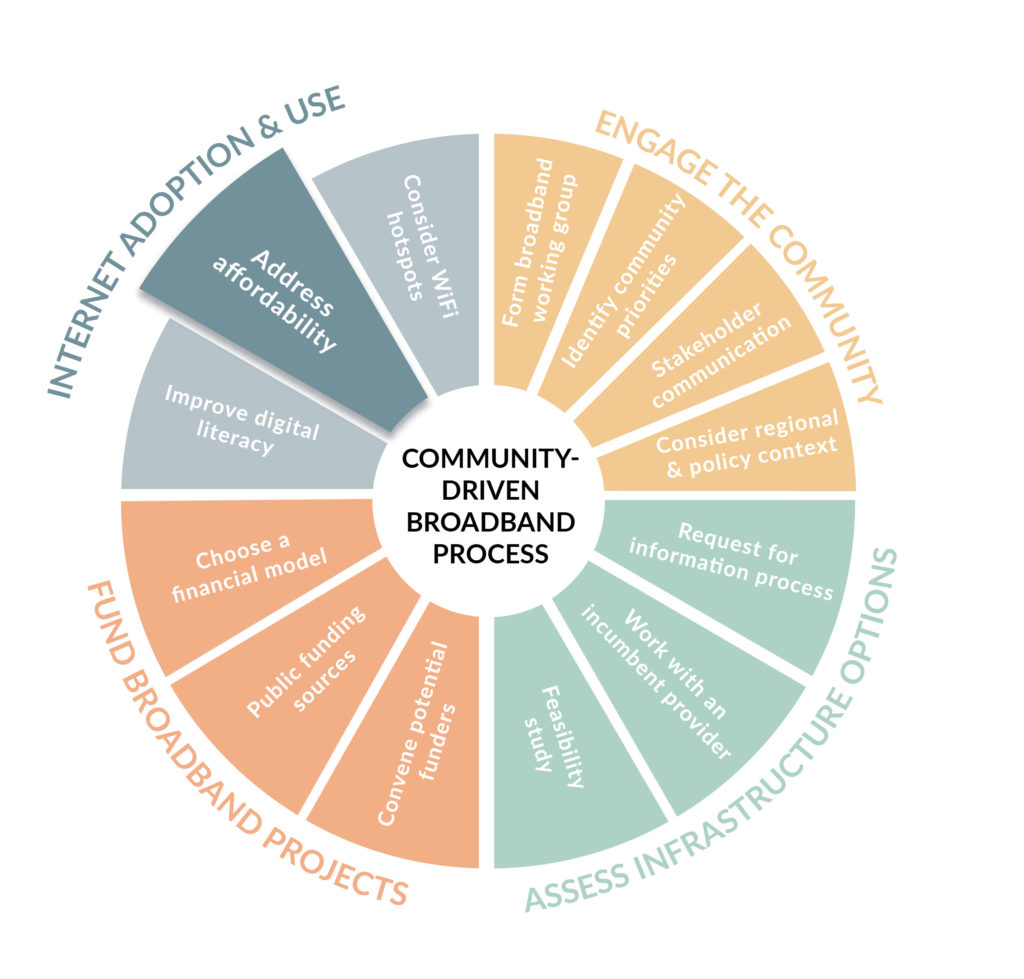BACKGROUND
High speed internet connectivity comes to your community and to your home at a cost. Monthly (or annual) payments can be expensive for customers, and in many cases, there could also be an increase in taxes for those same customers if their town financed the capital cost of the infrastructure construction. These costs can be a significant barrier to connectivity and result in inequitable access to the service within a community. However, thanks to the commitments and creative thinking of leaders on the island of Islesboro, Maine, that community has been able to make broadband service accessible at only $30 per month.
To ensure that access to broadband service is equitable, the cost to the consumer must be considered from the outset. Towns should ask: What cost is considered affordable for residents? How can we make sure individuals who have a harder time making payments can still get the connectivity they need?
The definition of “affordable” differs from household to household, and region to region, but when working within a community, it is possible to find a range that works for everyone while still meeting connectivity needs. Some internet service providers offer reduced fees if a resident qualifies for income-based federal programs (e.g., free and reduced lunch programs and Social Security). Community broadband working groups have created other ways to address affordability and ensure that it and equitable access is a community priority.
HOW IT WORKED
Affordability was a priority on Islesboro when community leaders began their pursuit of broadband in 2014. It was clear that the island needed to address its internet problem, but it wasn’t clear how they would finance it or who would own the infrastructure. The community decided that the municipality would own the system and bill the residents directly on an annual cycle. As a result, the internet service provider doesn’t bill the customers, rather the service provider bills the municipality. This approach places the administrative responsibilities on the town staff to issue annual bills and process payments while reducing overhead costs monthly processing fees that often raise subscription rates in a standard internet service model.
Islesboro Broadband Committee member and advocate for high speed internet, Roger Heinen, compares this system to any other municipally-owned service that is constructed with funds from the town budget but requires the users to pay a fee—like a town sewage system. He believes that the ownership model used by Islesboro helps keep costs low for residents.

Q&A WITH BROADBAND COMMITTEE MEMBER, ROGER HEINEN
What was the trouble with Islesboro’s internet service before the new system was built?
First of all, we didn’t have 100% coverage from the incumbent—Fairpoint’s digital subscriber line (DSL) did not reach every residence on the island. This DSL was only 1 or 2 Mbps download and a couple hundred kilobits going up. It was quite poor service, and it maxed out well below the Federal Communications Commission’s (FCC) definition of broadband at the time. It was a shared resource too, so the more people you had using it, the more the service was degraded.
Based on our goals as a community, it was clear that DSL was not going to be an acceptable answer for our future. The select board became aware of this problem, and so the project kicked off in late 2014 when we formed a broadband committee to start looking at the options.
What went into the decision to use a municipally-owned model?
My first inkling was to do this as a private enterprise—that we’d start a company, seek investors, build the fiber network, and then sell services at the market rate. However, it was very clear that the town did not support that proposal. The reasoning was that if we did it that way it might exacerbate the division of the “haves and haves not” of the island. The year-round residents had seen wealthy seasonal families throw money at the problem while school children couldn’t even do their homework at home. The town was afraid that a private entity might not serve equitably. We took that to heart, and we began exploring other options. Thinking that the town itself had to be proactive, we entered a process to build a Request for Information (RFI) and Request for Proposal (RFP) to various vendors to come up with solutions to solve the problem.
We had three goals that the proposals had to achieve:
- Coverage for 100% of the residences on the island
- Internet service that matched the FCC definition of broadband—currently 25 Mbps download/3 Mbps upload
- An on-island technician. It used to take days for a technician to come from the mainland to address problems.
So, once we put out this RFI, the town was the protagonist acting in its official capacity to say, “we want this solved.” A couple of the proposals said that the town should write an incentive check for several million dollars, and then the service provider would see what they could do. But what caught our attention was the people at GWI who said that they couldn’t underwrite the construction, but if the town could underwrite the construction and own the network, GWI would provide the service and support. That’s what we ended up doing. The town underwrote the construction expense, and the subscribers pay for the actual usage and support. Additionally, if the town was going to spend that much money, it was important to us that the town owned something. That is the crux of how we decided to finance the construction, and it’s the underpinning of the financial architecture now. The town budget pays for the repayment of the construction loan ($3.8 million), pays to keep the infrastructure in good working order, and keeps it insured. The town owns the 46 miles of fiber infrastructure on Islesboro, and it will own it permanently.
What role did affordability play in the decision to use that model?
It’s important to note that the service we have now— for at least 80% of the island—is less expensive than our previous inadequate service, and that includes the rise in property taxes. When we made that clear, people were excited to get on board… “Are you telling me I’m going to spend less money for better service?” The answer was yes. All in all, residents have saved a lot of money from having the town do this.
Also, because the town underwrote the construction, it has complete, unilateral control over what the fee to the subscribers is. Therefore, everyone pays one low rate for the best services possible—on par with or better than any metropolitan city in America. If we had just let an incumbent cable provider come in, we’d have no leverage, and the fees wouldn’t be consistent.
When we first set the fee, there was a long discussion with the select board. There was a minimum that would cover the cost to hook them up to the system, and then we had to address how much would be sufficient to cover maintenance and other overhead costs. The way we financed this was similar to the way you’d do it for a municipal sewer facility—where the users pay for the usage, but the town underwrote the initial expense.
The question became, “what was the minimum we could charge for both the subscriber base and the tax base?” It came out that the price should be $350 a year for subscribers. It has been that way for three years, and the select board seems committed to that number. It means the taxpayers finance some and the subscribers finance some. I think it works out very well as an example for how a town can do this, and it’s really quite similar to other municipal utilities.
How important was having the trust of the community through this process?
When we decided that the town had to be the protagonist and take control of its own destiny, it put us on the path to deeply socialize the benefits to the town. We started by doing town public information meetings. As the proposal took shape and we were pushing for a town meeting vote to fund it, we ramped up the meeting load. We had dozens, if not hundreds of meetings. The sewing circle, the sporting club… meetings with a hundred people at the school gym and one-on-one meetings with skeptics. In the end, it paid off. It was overwhelmingly supported when it came to a vote. The people who voted yes wanted a solution to the problem, but they also trusted the committee and the town to pull it off successfully.
What are some unique ways Islesboro was able to save on expenses?
When we first started talking to GWI about what the fees would be, their assumption was that they would be the ones to bill the subscribers, and there’s a cost to that. That means more administrative work for them, and they’d have to expand their servers. Additionally, as a company, they’d have to worry about bad debt. It turned out that it was much cheaper to have GWI bill the town once a year and for the town to bill the customers once a year. It saved around 25% of the total cost of the system. We could do the billing cheaper than GWI could. And billing the people once a year instead of once a month also saves administrative costs.
Another way we saved on expenses was using the volunteer expertise that we had within our community. We were lucky to have technical knowledge on the island. Page Clason, the on-island technician is filled with expertise, I have an IT background, and Vern Ziegler, one of the town assessors at the time, is an expert on town financial matters. We definitely saved on consultant fees, but not every town has this advantage. Some of the broadband committees in Maine are equipped, but others are better off seeking this technical expertise from a consultant, and there are people in the state who do provide that now.

How has Islesboro changed since it achieved broadband connectivity?
Broadband has helped the community vitality tremendously. I have heard from multiple people who have said, “We couldn’t be here without broadband, especially with COVID going on.”
Who would have known that COVID was going to happen? The network utilization has gone up substantially because of COVID. We have island school children at home, college kids taking classes at home, seasonal families who have decided to stay here and not go back to their other homes. These families have put their kids in school here, and it’s all because of broadband. Also, telehealth is part of the COVID response— now no one needs to meet face-to-face with a doctor unless it’s completely necessary. Broadband allows that to happen.
The fact that we invested in this and pulled it off has really helped the morale of the community, and it’s more than anecdotal. Young couples have moved to the island. People even move here from nearby towns on the mainland if they can work remotely. People are willing to put up with the other hassle points of living on an island to live and work at home here and have a quality community. I think it’s changed life for the better and permanently on Islesboro.
Additional Information
Low income situations: Some households may struggle to meet the fees even with the affordability measures that were taken. The town believes that all island households—especially those with school children—should be connected. In these situations, they turn to community organizations or private donations to make it possible. As of October 2020, the Islesboro Community Fund has not been used for this purpose, but it is an available resource if needed.
OUTCOME
The fiber network on Islesboro is provided to subscribers for $350 a year (about $30 a month) with the remaining infrastructure cost recouped from the tax base.
RESOURCES
- Islesboro’s Broadband Committee Presentation on Voter Information
- Island Journal – Grabbing the Digital Future
- Islesboro Broadband History
Originally published October 2020


